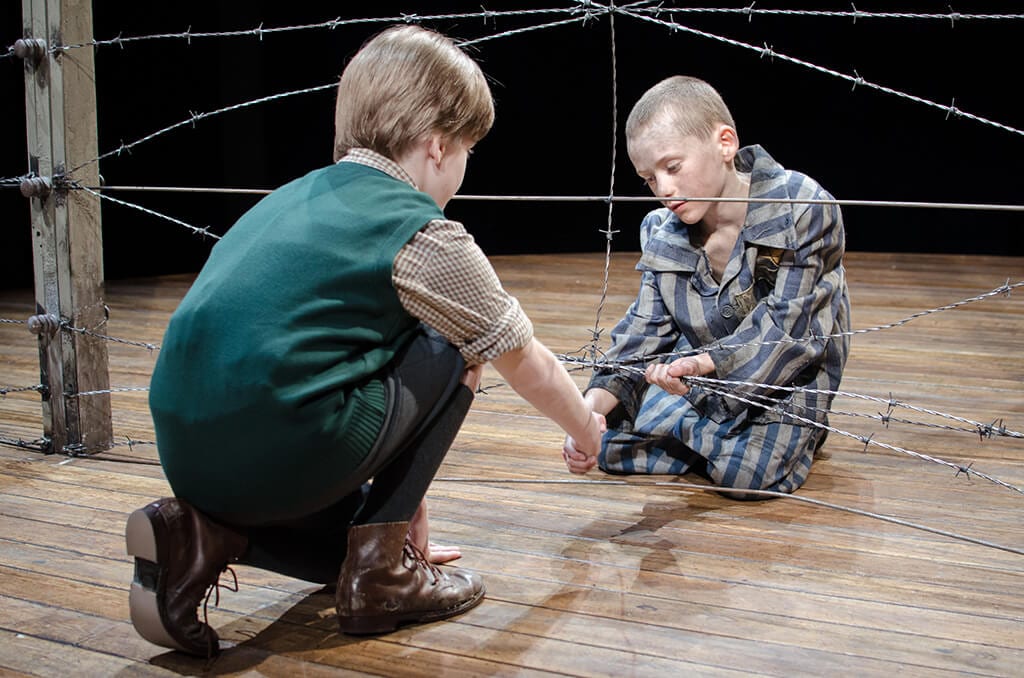The stage version of The Boy in the Striped Pyjamas raises the same question as the film and best-selling book on which it is based – is it ever acceptable to appropriate the holocaust as a vehicle for fiction?
The obvious answer is no. Yet the story of the friendship between two boys on either side of a concentration camp fence – one German, one a Jewish Pole – is being taught in schools all over the country.
I’m not saying children can’t tell the difference between fact and fiction. In any case, the story is often defended as a fable which makes no claims to historical accuracy (there were no nine year olds in the camps, and the children of Nazis couldn’t have met them if there were). If we accept this argument (and I’m not suggesting we do, but bear with me), then, as fables traditionally have a moral, we need to ask – what is the moral of this one? How well is it conveyed? The auditorium is filled with school children. What might they come away with after the show?
To answer this, let’s turn to the production itself. The staging and projections are artful, minimal and unsentimental. The gas chamber is revealed to have been at the back of the stage the entire time and provides, along with the fence which divides the two young boys, powerful symbolism. The lighting and almost dance-like scene changes enable skilful transitions between the camp perimeter and the house where young Bruno and his German family live. The mournful violin and costumes are evocative of the time, or at least the modern aesthetic of World War II. The pyjamas are a bit of a stretch, which, considering they are central to the story is problematic as soon as you look for authenticity rather than fable-making. Well told so far, though no moral as yet.
The acting, unfortunately, is stilted. There is no chemistry between any of the characters and the fight scene is so unconvincing that it’s embarrassing to watch. Perhaps the wooden delivery is partly due to a repetitive and cliché-riddled script including such lines as ‘he’s a barrel of laughs’ (none of the characters are) and ‘life’s not fair’ (an oversimplified understatement, given the subject matter). The maid whose monologues open and close the play is so shrill you’ll wish you brought earplugs. Her heavy-handed closing statement is that ‘nothing like that could ever happen again’. The child audience are left with an ironic claim rather than the moral necessary to confirm the play a fable.
If the fable fulfilled its own criteria, my opening question might be open to debate. However, as this so-called fable flounders on the grounds of acting, script and lack of any moral, it is fair to argue that the play is not justified in its appropriation of the holocaust as a vehicle for fiction, let alone children’s education.

